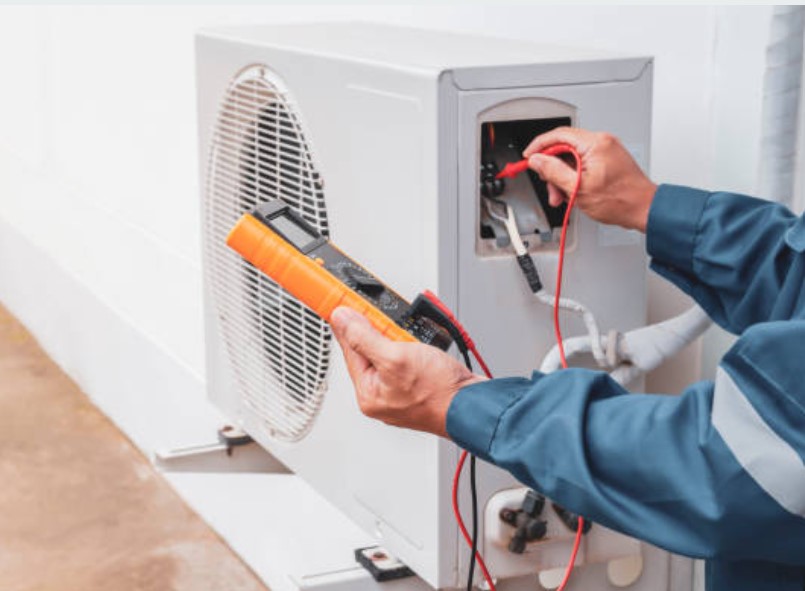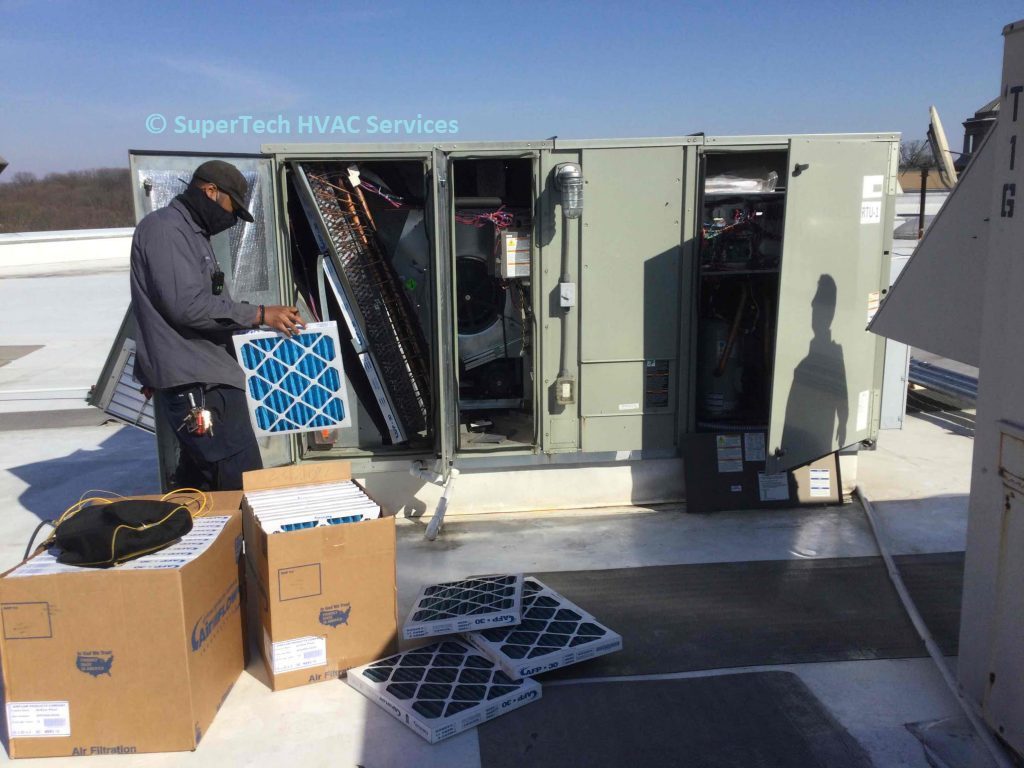How Property Owners are Switching to ductless mini splits for Energy Savings
Wiki Article
Exactly How a Warm Pump and Heater Work With Each Other to Enhance Your Home's Home heating Performance
Recognizing how a heatpump and furnace collaborate is important for house owners looking for reliable home heating options. Each system has its strengths, giving a well balanced method to home comfort. The heatpump masters modest temperatures, while the heating system supplies quick heat during extreme cold. This harmony not only minimizes energy prices however also improves the life expectancy of both home appliances. What aspects affect this partnership, and just how can homeowners maximize their advantages?Comprehending Warm Pumps: Just How They Function
Although several individuals may be unknown with their inner functions, warmth pumps play an important duty in modern-day heater. These gadgets operate by transferring warm from one place to an additional, making use of the concepts of thermodynamics. In colder months, a heatpump removes heat from the outdoors air, ground, or water, and transfers it indoors to warm the home. Conversely, throughout warmer months, it can turn around the procedure, working as an air conditioning system by expelling warm from inside to the outside.Heat pumps contain an evaporator, compressor, growth, and condenser valve. The refrigerant within the system takes in heat as it evaporates at low temperatures and pressures. The compressor after that boosts the pressure and temperature level of the refrigerant, allowing it to release warm as it condenses. This efficient process can substantially minimize power usage compared to conventional heating methods, making heatpump a sustainable selection for climate control in homes.The Function of Heaters in Home Heating
Heating systems play a necessary role in home heating by offering a reputable source of heat during the colder months. They run by producing warm through burning or electric resistance, dispersing it throughout the home using air ducts or glowing systems. The performance of a furnace is commonly determined by its Yearly Fuel Application Effectiveness (AFUE) score, which suggests exactly how properly the device transforms gas into heat.Furnaces can make use of different power resources, consisting of gas, propane, electricity, or oil, enabling homeowners to select one of the most ideal choice for their requirements. Unlike heatpump, which may battle in extreme chilly, heating systems preserve constant performance, making certain that indoor temperatures remain comfy no matter outdoor conditions. Additionally, contemporary heating systems typically come outfitted with sophisticated modern technology, such as clever thermostats and variable-speed blowers, boosting their efficiency and responsiveness. This convenience makes heaters an important element in all-encompassing home heating methods.
Advantages of Utilizing Both Equipments Together
Integrating the strengths of both furnaces and heatpump can lead to a much more efficient and reliable home heating remedy. Using both systems enables home owners to make the most of the warmth pump's energy performance during milder temperatures while counting on the furnace for even more extreme cold problems. This twin strategy can substantially decrease energy prices, as warmth pumps take in less electricity than typical home heating approaches when temperature levels are moderate.Additionally, using both systems with each other can improve convenience degrees in the home. Heatpump can supply regular, also heating, while furnaces can promptly elevate ambient temperatures when required. Moreover, the combination of both systems can expand the lifespan of devices by minimizing damage on each unit, as they share the work. Ultimately, property owners can take pleasure in a well balanced, cost-efficient home heating solution that readjusts seamlessly to differing weather, guaranteeing a warm and welcoming home throughout the winter season.Exactly How Warm Pumps and Furnaces Complement Each Other
They develop a complementary home heating system that makes the most of performance and convenience when home owners incorporate heat pumps and heating systems. Warm pumps operate by moving heat from the outdoors air or ground, making them highly reliable in modest environments. They succeed during milder temperatures, supplying economical home heating. Alternatively, furnaces create warmth with burning or electric resistance, delivering solid, immediate warmth during extreme cold conditions.The mix of these two systems enables for vibrant adjustments based upon temperature level fluctuations. Throughout warmer months or milder wintertime days, the warmth pump can take the lead, preserving power and decreasing prices. As temperatures drop, the heater can seamlessly engage, ensuring regular heat throughout the home. This harmony not only maximizes energy usage however additionally enhances the life expectancy of both systems, as each system runs within its optimal efficiency variety. Together, they produce a well balanced environment that adjusts to varying climate needs.
Optimizing Performance: Tips for Homeowners
House owners can improve their heating efficiency with numerous practical techniques. Establishing a routine upkeep routine, incorporating smart thermostat technology, and executing efficient insulation and securing services are vital steps. These procedures not only boost convenience yet likewise decrease energy costs.Regular Upkeep Schedule
To assure optimal home heating efficiency, developing a normal maintenance timetable is crucial for any kind of home. Home owners should focus on regular examinations of both heatpump and furnaces to identify peak efficiency. This includes altering air filters each to 3 months, as blocked filters can substantially decrease effectiveness. Additionally, scheduling specialist upkeep at least yearly allows specialists to determine and deal with prospective concerns before they intensify. House owners ought to also cleanse the heatpump's outdoor unit to stop debris buildup that can hinder airflow. By sticking to a normal upkeep timetable, home owners not just enhance their heater' efficiency but likewise extend their life-span, leading to higher convenience and decreased power costs throughout the colder months.Smart Thermostat Assimilation
Incorporating a clever thermostat into a home furnace can significantly improve power efficiency, especially as it permits precise control over temperature setups. These devices can learn the house owner's timetable and choices, immediately changing the temperature level to optimize convenience while decreasing energy use. For circumstances, they can reduce home heating throughout times when the home is vacant, minimizing unnecessary intake. Lots of smart thermostats likewise provide real-time power use information, enabling house owners to make educated choices about their heating behaviors. In addition, remote accessibility via smart device apps allows users to adjust setups from anywhere, ensuring the home is cozy upon return. In general, smart thermostat integration not only enhances comfort yet substantially adds to power financial savings and performance.
Insulation and Securing Solutions
Smart thermostats play an essential function in energy effectiveness, yet their efficiency can be greatly enhanced by proper insulation and securing remedies. Home owners ought to focus on insulating floorings, walls, and attic rooms to decrease warmth loss. Top notch insulation products, such as spray foam or fiberglass, can substantially boost thermal resistance. Furthermore, sealing gaps around doors, ducts, and home windows stops cold air seepage and warm retreat. Weatherstripping and caulking work approaches for addressing these leakages - ductless mini splits. Normal assessments for site web air leakages, along with using blower door examinations, can assist recognize trouble locations. By spending in insulation and sealing, home owners can maximize the performance of their heater, ultimately leading to decreased power intake and reduced energy costsTypical Misconceptions About Warm Pumps and Furnaces
What mistaken beliefs border heatpump and heating systems? Several individuals mistakenly believe that warmth pumps are ineffective in cooler climates. Actually, contemporary warmth pumps are made to run efficiently even in low temperatures, offering trusted home heating throughout winter. One more typical misconception is that heating systems are always extra effective than heatpump. Nevertheless, this depends on the certain power sources and efficiency scores of the systems concerned. Some might likewise assume that utilizing both systems at the same time is unnecessary, but actually, this combination can optimize heating effectiveness, especially during extreme weather. In addition, people typically assume that warm pumps require continuous upkeep, when truthfully, they have similar upkeep needs to conventional heating systems. By exposing these myths, home owners can make more enlightened choices regarding their heating alternatives, eventually resulting in enhanced convenience and power performance in their homes.Upkeep Considerations for Combined Equipments

Often Asked Questions
Can Warmth Pumps Job Efficiently in Extremely Cold Climates?
Heatpump can have a hard time in incredibly chilly climates because of lowered performance and warmth extraction restrictions. However, improvements in modern technology have actually brought about models developed for much better performance in such problems, improving their feasibility in severe environments.
The Length Of Time Do Warm Pumps and Furnaces Usually Last?
Warmth pumps typically last 15 to twenty years, while heaters have a life expectancy of 15 to 30 years. Regular maintenance can expand their long life, making sure efficient procedure and decreasing the requirement for early substitutes.
What Is the Ordinary Price of Putting Up Both Equipments?
The average price of mounting both a warmth pump and a heater generally ranges between $5,000 to $10,000 - heat pump service. Factors affecting this expense include system size, setup intricacy, and regional labor ratesExist Tax Obligation Rewards for Utilizing Energy-Efficient Home Heating Equipments?
Several homeowners ask about tax obligation motivations for energy-efficient furnace. Various government and state programs usually provide credits or refunds, urging the adoption of sustainable innovations to minimize power intake and promote environmental duty.Exactly how Do I Choose the Right Dimension Heat Pump and Furnace?
Choosing the right size heatpump and heating system entails computing the home's square video, thinking about insulation quality, and evaluating neighborhood climate. Consulting a professional can assure perfect system performance and energy effectiveness based upon details demands. ductless mini splits. Recognizing exactly how a heat pump and heater work with each other is crucial for home owners seeking efficient heating options. In colder months, a warm pump removes warm from the outside air, ground, or water, and transfers it inside your home to warm the living space. When homeowners incorporate warmth pumps and heating systems, they create a complementary heating system that maximizes performance and convenience. Heat pumps operate by moving warm from the outside air Click This Link or ground, making them highly effective in modest environments. Warmth pumps can struggle in extremely chilly climates due to minimized efficiency and heat extraction restrictionsReport this wiki page